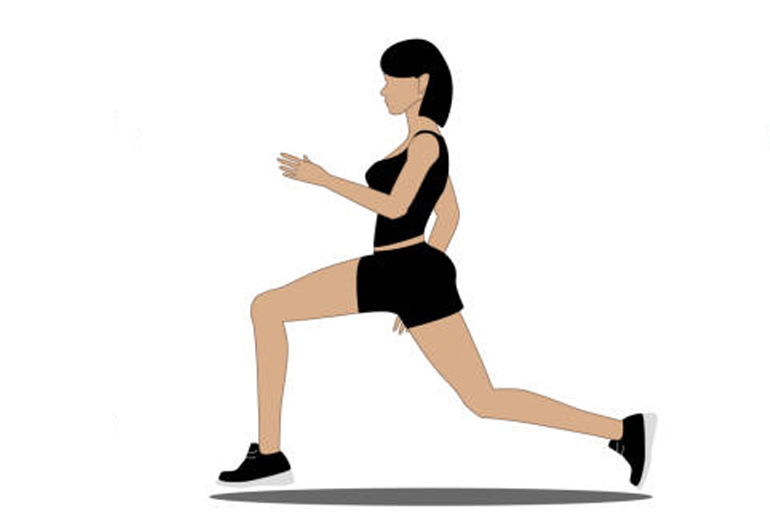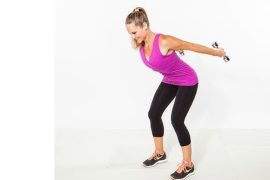Jumping lunges are a powerful exercise that helps strengthen leg muscles and improve overall fitness. Unlike static lunges, they incorporate an explosive movement that boosts lower body strength and engages multiple muscle groups, including the quads, glutes, hamstrings, and core. This dynamic exercise enhances endurance and coordination, making it a valuable addition to any workout routine. However, proper form is crucial to prevent injuries, especially to the knees and ankles.
Jumping lunges:
Jumping lunges are a high-intensity plyometric exercise that combines the muscle-strengthening benefits of traditional lunges with explosive jumping movements. Starting in a lunge position, you jump and switch your legs mid-air, landing in a lunge with the opposite leg forward. This continuous motion engages the quads, glutes, hamstrings, and core while also improving balance, coordination, and calorie burn.
Benefits of Jumping Lunges
Jumping lunges are a high-intensity, plyometric exercise that can elevate your fitness levels by improving strength, endurance, and overall athletic performance. This explosive movement combines traditional lunges with a dynamic jumping motion, engaging multiple muscle groups for a full-body workout. Here are some key benefits of incorporating jumping lunges into your routine:
1. Strengthens Lower Body Muscles
Jumping lunges effectively target key lower body muscles, including:
- Quadriceps: These front thigh muscles help extend the knee and power the jumping motion.
- Hamstrings: Located at the back of the thigh, they assist in knee flexion and hip extension.
- Gluteus Maximus: The largest muscle in the buttocks, responsible for hip movement and power generation.
- Calves: Essential for propelling the body upward and stabilizing landings.
By regularly performing jumping lunges, you can enhance muscle strength, endurance, and definition in these critical areas.
2. Enhances Balance and Coordination
- This exercise requires synchronized movement of the legs, core, and arms, improving neuromuscular coordination.
- Proper landing technique helps develop stability and prevents injuries.
- Engaging core muscles during the movement enhances postural control, benefiting overall balance in daily activities and sports.
3. Helps Burn Calories and Supports Weight Loss
- Jumping lunges are a high-intensity, calorie-burning exercise that elevates heart rate and boosts metabolism.
- They combine strength training and cardiovascular effort, making them highly effective for fat loss.
- Regular inclusion in workouts can increase calorie expenditure, contributing to weight management goals.
4. Boosts Cardiovascular Health
- The explosive movements of jumping lunges challenge the cardiovascular system, similar to high-intensity interval training (HIIT).
- They improve heart rate, circulation, and lung capacity, enhancing overall endurance.
- Consistent practice can help strengthen the heart muscle and improve cardiovascular efficiency.
How to Do Jumping Lunges Safely
Jumping lunges are a high-impact plyometric exercise that builds lower body strength and cardiovascular endurance. However, proper form and technique are essential to prevent injuries. Follow this step-by-step guide to perform them safely:
- Start Position: Stand tall with your feet shoulder-width apart.mEngage your core and keep your shoulders back.
- Arm Positioning: Raise your arms to shoulder height, bent at the elbows. Swing your arms forward and backward to help generate momentum.
- Lunge Down: Step back with one leg, lowering your body into a lunge.Ensure your front knee stays directly above your ankle. Your back knee should hover just above the ground without touching it. Keep your chest upright and core engaged.
- Explosive Jump: Push off the ground powerfully with both feet. Jump upwards while switching leg positions in mid-air. Swing your arms forward to assist with momentum.
- Soft Landing: Land gently on the balls of your feet in a lunge position with the opposite leg forward. Bend your knees to absorb the impact. Avoid locking your knees upon landing.
- Continue the Movement: Keep jumping and switching legs in a smooth, controlled manner. Maintain proper posture throughout the exercise.
Things to Keep in Mind
- Maintain Good Form – Keep your chest lifted and core tight. Avoid leaning too far forward.
- Control Your Movements – Perform each repetition smoothly without bouncing or jerking.
- Soft Landings – Land on the balls of your feet and bend your knees to absorb shock.
- Listen to Your Body – Stop if you feel pain or discomfort. Increase intensity gradually.
- Warm-Up & Cool Down – Always warm up before and stretch after to prevent injuries.
Important: If you have knee, ankle, or joint issues, consult a healthcare professional or fitness
Disclaimer:
The information contained in this article is for educational and informational purposes only and is not intended as a health advice. We would ask you to consult a qualified professional or medical expert to gain additional knowledge before you choose to consume any product or perform any exercise.







